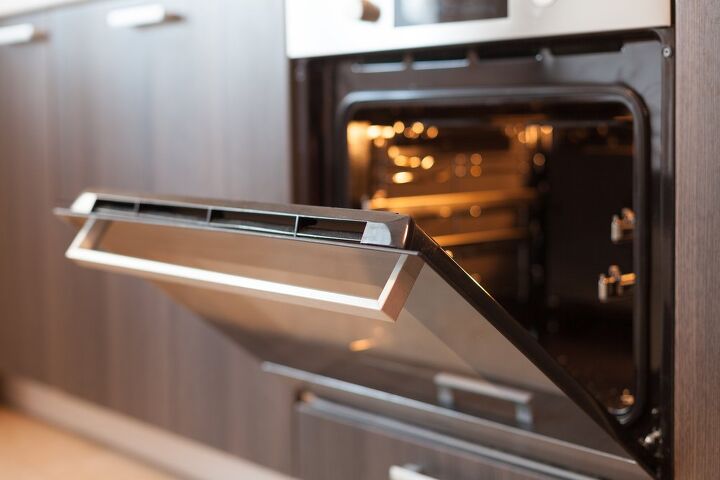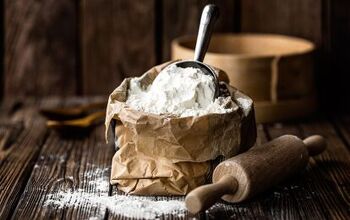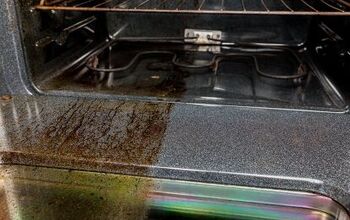Steam Clean Vs. Self Clean Oven: Which One Is Better?

Most people consider an oven an essential kitchen appliance, making it possible to cook and bake wonderful dishes. But manually cleaning an oven can be a royal pain in the you-know-what. Luckily, many ovens feature steam-clean or self-clean options to make the process a lot easier.
Self-cleaning ovens use a much higher heat and take longer to run a clean cycle than steam-clean ovens. However, self-clean ovens are better for serious built-up dirt, grime, and gunk. But since the oven gets so hot, you can’t use your stove during the self-cleaning cycle. Both oven types have pros and cons, and you can find some models that feature both options.
If you’re in the market for a new oven, deciding which cleaning feature is best for you is vital. You certainly don’t want to waste precious time having to do any more work than you need to. Familiarize yourself with the pros and cons of self-clean and steam-clean ovens to pick the best option for you.
A Closer Look At Self-Clean Ovens
Self-cleaning ovens have been around for a while. They basically use extremely high heat to clean your oven, so you don’t have to.
An oven in the self-clean cycle typically has a set temperature of roughly 450 degrees. Additionally, during the process, the temperature intensifies for a short time to burn off built-on gunk and debris. This intense heat can reach 800 to over 1,000 degrees Fahrenheit or more, turning debris into ash.
For this reason, most self-cleaning ovens feature a locking component when in self-clean mode. This protects against someone accidentally opening the oven door during such extreme heat.
After the cycle completes a few hours later, you simply let it cool and wipe it out.
The Pros Of Self-Clean Ovens
Here is a closer look at the upsides of using self-clean ovens.
- One of the best things about a self-clean oven is it can really get your oven clean. It does an exceptional job at eliminating caked-on residue and debris.
- The self-cleaning feature on the oven is straightforward to use. In most models, you must lock the oven before pressing the self-clean button (a safety feature). The oven immediately enters self-clean mode.
- After the cleaning cycle completes, you will only need to wipe out the oven with a damp cloth. This step ensures you get all the remaining ash from the debris that burnt up during the cycle.
The Cons Of Self-Cleaning Ovens
As amazingly clean as your oven will get with the self-clean feature, there are also several disadvantages.
- The oven needs to get extremely hot during a self-clean cycle. This can pose potential dangers, especially if you have kids or pets in the house. Most ovens have a safety feature that locks the oven while it’s self-cleaning. And you won’t be able to open it until it cools to a safer temperature.
- Since the oven needs to get so hot, self-cleaning ovens use up a lot of energy. An increase in energy means higher energy bills.
- It takes a while for a self-clean cycle to complete, usually four hours. It’s important to stay nearby when your oven is in self-clean mode. So this extended time can make finding the time to do it challenging.
- Self-cleaning ovens typically give off a strong odor during the cycle. Therefore, this can be a big drawback if you don’t have proper ventilation in your kitchen.
- You can’t cook on your stove while the oven is self-cleaning since it gets so hot.
- The self-clean cycle could present a possible fire risk if you don’t use it correctly.
6 Important Tips When Using Self-Cleaning Ovens
To ensure everything stays safe and functional, using the self-clean feature properly is essential. Here are critical tips to follow when using a self-cleaning oven.
- Don’t leave anything in the oven when you run the self-clean option. Remove all pans, oven racks, grills, etc.
- To help reduce the intensity of strong odors, remove any large pieces of food debris. Also, turn on the exhaust fan in your range hood and open any kitchen windows if possible.
- Most ovens won’t begin the self-cleaning cycle if the oven door is unlocked. But if your oven doesn’t have this feature, ensure you lock the oven first.
- Don’t open the oven door immediately after the cleaning cycle. Make sure the oven cools down first.
- Wipe down the oven when the self-clean cycle is done. Use a damp cloth. Don’t use any cleaners in the oven.
- Some self-clean ovens offer various cycles. For example, you can choose between a two-hour or four-hour option. If your oven isn’t in terrible shape, you could opt for the lower setting to save some energy and time.
A Closer Look At Steam-Clean Ovens
A steam-clean oven cleans precisely how you would expect, with steam. Typically, you need to pour water into the bottom of the oven to create steam when the oven heats up.
Steam-clean ovens have a specific place to put the water. Your oven’s instruction manual will tell you exactly how much water you should use. Then, you start the cleaning cycle, and the oven begins to heat up to create steam.
The primary difference between self-cleaning ovens and steam-cleaning ovens is the temperature. Unlike self-clean ovens, steam-clean models only reach temperatures of about 250 degrees Fahrenheit. The steam helps loosen up baked-on grime and gunk, making cleaning easier.
When the cycle completes, you must wipe out the oven to eliminate the residue and food debris.
The Pros Of Steam-Clean Ovens
- When you use a steam-clean oven, the cycle usually only lasts between 30 to 90 minutes. The length depends on how intense a clean your oven needs. You won’t have to wait so long for your oven to get clean.
- Since steam-clean cycles don’t get as hot or take as long, they won’t require as much energy. This helps keep energy costs down, which is always a plus, especially since, at this time, there are no Energy-Star-rated ovens.
- You won’t have the same strong odors as you get with a self-clean oven.
- A self-clean oven allows you to still use your stove while the oven is getting clean. Since it doesn’t get so hot, you can still put pans and pots on the stove and cook.
The Cons Of Steam-Clean Ovens
Steam-clean ovens also have a few cons that you need to consider when making your decision.
- Steam-clean ovens tend not to clean as thoroughly as a self-clean oven. This is because they don’t reach such high temperatures.
- You can expect to put in a bit more work to clean a steam-clean oven. The steam basically loosens up food particles and stuck-on debris. Therefore, you’ll need to give the inside of the oven a much more thorough wipe-down after the steam-clean cycle completes.
6 Important Tips For Using Steam-Clean Ovens
To get the most from your steam-clean oven, follow these essential tips.
- Steam-cleaning doesn’t do a great job on baked-on stains. Therefore, run the cycle as soon as your oven ends up with a mess.
- Do not use any chemicals or cleaners along with the steam clean.
- Leave the oven door closed throughout the steam-clean cycle. It’s best to lock it, so no one accidentally opens the door.
- Make sure to remove any large pieces of food debris before starting the steam-clean cycle. Likewise, make sure the oven is empty before you begin the process. You don’t want to end up with stuff like melted plastic in your oven.
- Wait for the oven to cool down before you open the door.
- Thoroughly wipe down the oven’s interior after the cleaning cycle before using it.
Does A Steam-Clean Oven Need A Water Line?
You don’t need to install a water line to operate a steam-clean oven. Steam-clean ovens are designed with a space on the oven floor for you to place water, usually about one cup. As the oven heats up, it turns the water into steam.
Steam-Clean Oven vs. Self-Clean Oven: The Final Verdict
You can save time and effort when it comes to cleaning your oven with either a self-clean or steam-clean oven. But as far as which is better, it depends on your personal preferences and situation.
If you have young children or pets in the household, you might feel more at ease with a steam-clean oven. It could be you prefer the lower temperature and no odors. But if your oven tends to get really messy and there’s lots of caked-on food, you likely should consider a self-clean option.
Steam-clean ovens can save you money since they don’t use as much energy. They also don’t take as long to clean the oven. But you’ll have to put in a bit more effort after the cycle to wipe out the appliance.
Ultimately, whether you choose a self-clean oven or a steam-clean oven, you need to operate them properly. Always follow the proper steps and safety precautions, and stick around your house when the cycle is in process. If you want to keep your options open, shop around for ovens that offer both cleaning methods.

Stacy Randall is a wife, mother, and freelance writer from NOLA that has always had a love for DIY projects, home organization, and making spaces beautiful. Together with her husband, she has been spending the last several years lovingly renovating her grandparent's former home, making it their own and learning a lot about life along the way.
More by Stacy Randall





















![How To Reset A Whirlpool Cabrio Washer [In 5 Easy Steps!]](https://cdn-fastly.upgradedhome.com/media/2023/07/31/9076531/how-to-reset-a-whirlpool-cabrio-washer-in-5-easy-steps.jpg?size=350x220)





